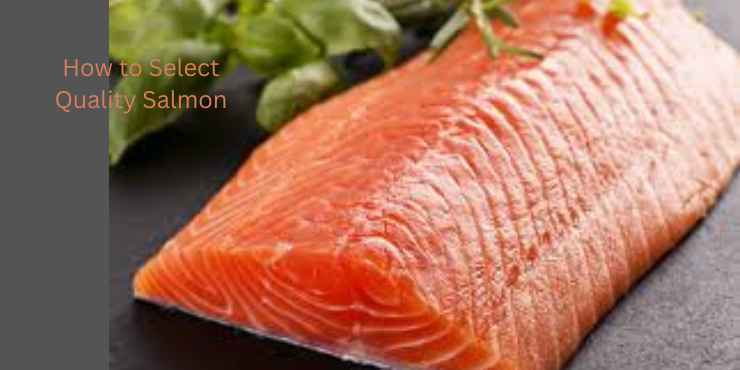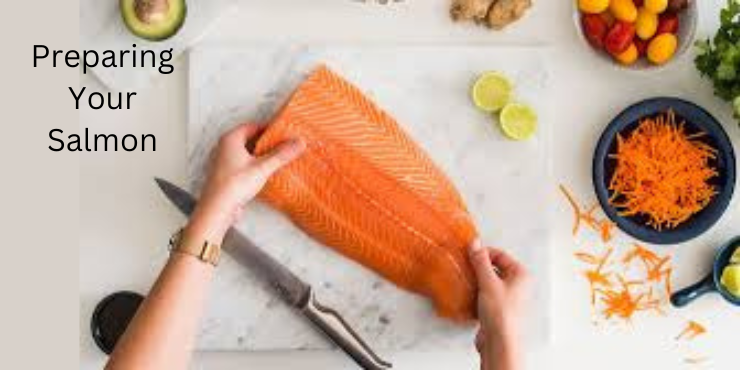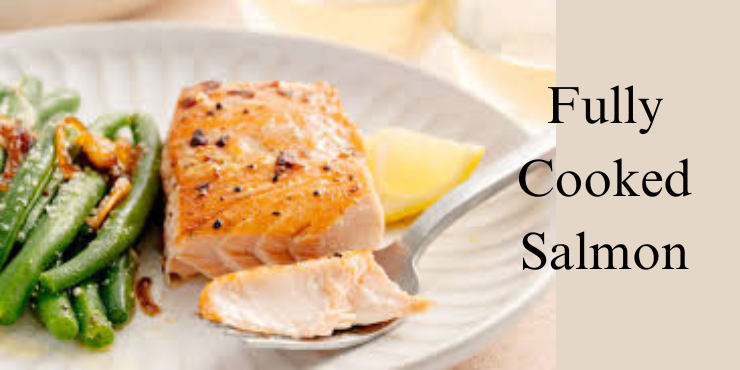Table of Contents
Introduction
Salmon is not just a delicious and versatile fish; it’s also a powerhouse of nutrition. fully cooked salmon ensures you enjoy its flavors while reaping the health benefits it offers. Whether you’re a seasoned chef or a novice in the kitchen, understanding how to fully cook salmon is essential for a delightful dining experience.
Choosing the Right Salmon

Fresh vs. Frozen
When it comes to choosing salmon, both fresh and frozen options can be excellent. Fresh salmon is often preferred for its texture and flavor, but frozen salmon, if properly thawed, can be just as good.
Wild-Caught vs. Farm-Raised
Wild-caught salmon typically has a stronger flavor and firmer texture compared to farm-raised salmon, which is usually milder and fattier. Your choice depends on personal preference and availability.
How to Select Quality Salmon

Look for salmon with vibrant color and moist flesh. Avoid fish with a strong fishy odor, as this can indicate spoilage. For fillets, check for clear, not cloudy, eyes and shiny skin.
Preparing Your Salmon

Thawing Frozen Salmon
Thaw frozen salmon in the refrigerator overnight. For a quicker method, place it in a sealed plastic bag and submerge it in cold water for about an hour.
Cleaning and Prepping the Fish
Rinse the salmon under cold water and pat dry with paper towels. Remove any remaining scales and bones using tweezers.
Seasoning Options
Season your salmon with a variety of herbs and spices. Common seasonings include lemon, dill, garlic, and pepper. Marinades can also add flavor; just be sure not to marinate for too long, as the acid can break down the fish.
Cooking Methods
Oven-Baked Salmon
Step-by-Step Instructions
- Preheat your oven to 375°F (190°C).
- Place the salmon on a baking sheet lined with parchment paper.
- Season the salmon as desired.
- Bake for 12-15 minutes, depending on the thickness of the fillet.
Recommended Temperature and Time
Cook until the salmon reaches an internal temperature of 145°F (63°C).
Pan-Seared Salmon
Step-by-Step Instructions
- Heat a tablespoon of oil in a pan over medium-high heat.
- Place the salmon skin-side down in the pan.
- Cook for 4-5 minutes, then flip and cook for another 3-4 minutes.
Tips for Perfect Searing
Ensure the pan is hot before adding the salmon to get a crispy skin. Avoid moving the fish around too much.
Grilled Salmon
Step-by-Step Instructions
- Preheat your grill to medium-high heat.
- Brush the grill grates with oil to prevent sticking.
- Place the salmon on the grill, skin-side down.
- Grill for about 6-8 minutes per side.
Best Practices for Grilling
Keep the grill lid closed to cook the salmon evenly. Use a fish spatula to carefully flip the salmon.
Poached Salmon
Step-by-Step Instructions
- Fill a pan with enough water to cover the salmon.
- Add aromatics like lemon slices, dill, and bay leaves.
- Bring to a simmer, then add the salmon.
- Poach for 10-12 minutes.
Benefits of Poaching
Poaching is a gentle cooking method that keeps the salmon moist and tender.
Steamed Salmon
Step-by-Step Instructions
- Set up a steamer basket over boiling water.
- Place the salmon in the basket.
- Cover and steam for 10-12 minutes.
Why Steaming is Healthy
Steaming preserves nutrients and requires no added fats.
Ensuring Salmon is Fully Cooked Salmon
Using a Meat Thermometer
The most reliable way to check if your salmon is fully cooked is to use a meat thermometer. Insert it into the thickest part of the fish, and look for a temperature of 145°F (63°C).
Visual Cues to Look For
Fully cooked salmon will be opaque and flaky. The flesh should easily separate with a fork.
Importance of Internal Temperature
Cooking salmon to the correct internal temperature ensures it is safe to eat and retains its moisture and flavor.
Common Mistakes to Avoid
Overcooking
Overcooked salmon can become dry and tough. Keep a close eye on your cooking time and temperature.
Undercooking
Undercooked salmon can be unsafe to eat. Always check the internal temperature.
Seasoning Errors
Avoid overwhelming the delicate flavor of salmon with too many strong spices. Balance is key.
Serving Suggestions
Side Dishes that Complement Salmon
Salmon pairs well with a variety of sides such as roasted vegetables, quinoa, or a fresh salad.
Sauces and Garnishes
Enhance your salmon with sauces like dill cream sauce, lemon butter, or a simple vinaigrette. Fresh herbs and citrus zest make great garnishes.
Presentation Tips
Serve your salmon with a garnish of fresh herbs and a wedge of lemon for a restaurant-quality presentation.
Storing and Reheating Leftovers
Best Practices for Storing Cooked Salmon
Store leftover salmon in an airtight container in the refrigerator. It will keep for up to three days.
How to Reheat Without Drying Out
Reheat salmon gently in a covered pan over low heat or in the oven at a low temperature. Adding a splash of water or broth can help retain moisture.
Conclusion
Cooking salmon to perfection is an art that can be mastered with a little practice and attention to detail. Whether you bake, sear, grill, poach, or steam, following these guidelines will ensure your salmon is fully cooked and delicious every time. Enjoy experimenting with different flavors and techniques to make this nutritious fish a staple in your culinary repertoire.
FAQs
How can I tell if my salmon is cooked without a thermometer?
Look for opaque flesh and flakiness. The salmon should easily separate with a fork.
What are some popular seasonings for salmon?
Lemon, dill, garlic, and pepper are popular choices. Marinades with soy sauce, honey, and ginger also work well.
How long can cooked salmon be stored in the fridge?
Cooked salmon can be stored in the refrigerator for up to three days.
Can I freeze cooked salmon?
Yes, you can freeze cooked salmon. Wrap it tightly in plastic wrap and place it in a freezer-safe bag. It will keep for up to three months.
Is it safe to eat salmon skin?
Yes, salmon skin is safe to eat and can be quite tasty when crispy. Make sure to clean it thoroughly before cooking.

